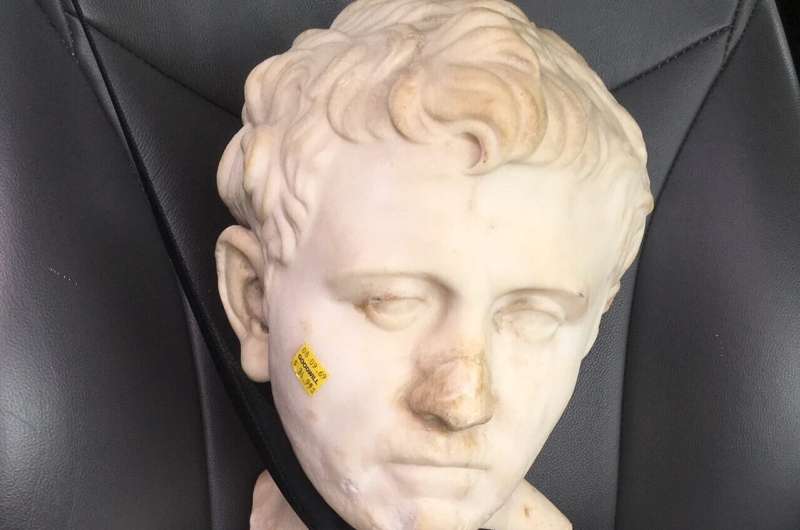An ancient Roman bust from around the first century that had been missing for decades has finally made its way into the San Antonio Museum of Art, and all it took was for one artist to buy it from a Texas Goodwill for under $40.
In 2018, art collector Laura Young was shopping at a Goodwill store in Austin, Texas when she stumbled upon a sculpture on the floor beneath a table, according to the San Antonio Museum of Art. Someone that looks for undervalued or rare art pieces, Young told The Art Newspaper she bought the piece for $34.99, and a picture of it after she bought it shows it buckled up in her car with a price tag on its cheek.
After buying the bust, Young noticed it looked very old and worn, so she wanted to find out when and where it came from. Over the next couple of years, Young consulted with experts in art history at the University of Texas at Austin and those at auction houses across the United States looking for answers.
Eventually, Jörg Deterling, a consultant for the fine arts brokerage Sotheby's, identified the bust as a piece that was once in a German museum decades ago, and connected her with German authorities.
< Watch the video st the source page. >
Turns out, the sculpture is from late first century B.C. to early first century A.D. The museum believes it depicts a son of Pompey the Great, who was defeated in civil war by Julius Caesar, while The Art Newspaper reported the bust is believed to depict Roman commander Drusus Germanicus.
The bust had belonged to King Ludwig I of Bavaria, who lived from 1786 to 1868, and was part of a full-scale model he built of a house from Pompeii, called the Pompejanum, in Aschaffenburg, Germany. The model stood for nearly 200 years, but during World War II, it was severely damaged by Allied bombers.
No one is quite sure of how the bust went from being nearly destroyed to the Austin Goodwill, but the museum noted the U.S. Army established bases in Aschaffenburg that were in use until the Cold War, so a Texas soldier likely took it before returning home.
"It's a great story whose plot includes the World War II-era, international diplomacy, art of the ancient Mediterranean, thrift shop sleuthing, historic Bavarian royalty, and the thoughtful stewardship of those who care for and preserve the arts, whether as individuals or institutions," Emily Ballew Neff, Kelso director at the museum, said in a statement.
As part of an agreement with Bavarian Administration of State-Owned Palaces, Gardens, and Lakes, the Roman bust will be on display at the San Antonio Museum of Art from now until May 21, 2023. Afterwards, it will finally return to Germany.
Young said she was excited to discover the bust's origins, but added it was bittersweet since she couldn't keep or sell it.
"Either way, I'm glad I got to be a small part of (its) long and complicated history, and he looked great in the house while I had him," she said.
- Karlston
-

 1
1



Recommended Comments
There are no comments to display.
Join the conversation
You can post now and register later. If you have an account, sign in now to post with your account.
Note: Your post will require moderator approval before it will be visible.